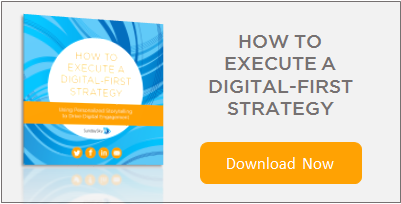We are in the age of the customer, where there is limitless access to information about competitive products and services and where customer loyalty is harder than ever to build and maintain. Many brands recognize that they can build loyalty when customers take full advantage of the products and services they already own and build advocacy by getting them to proactively tell their friends.
While most brands understand this concept, many find it challenging to proactively drive the type of behavior change that helps a customer take full advantage of her existing product or service. For example, if a cable company offers free Wi-Fi hot spots to help their customers lower their mobile data charges, this service doesn’t engender any loyalty if the customer doesn’t know about it or doesn’t use it. Similarly, if a credit card company offers travel protection services, but a heavy traveler doesn’t know about this, he might pay extra for equivalent services from a travel agent.
To aid in utilization and building loyalty, many brands have developed recommendation engines that are designed to recommend the next best action for customers to take to make the most of their product or service. Here’s where this strategy often goes wrong: brands confuse “next best action” with “next best offer.”
In many cases these engines could instead be described as “next-best-offer” systems, where the goal is to sell something to a customer. They can be deployed on a brand’s website or as a script in the call center to be used to turn a service inquiry into a selling opportunity. This frustrates customers, who think the brand “is always trying to sell me something when I’m not getting enough value from what I already pay for.”
While most companies do want their customers to buy more products or features, it’s unlikely that product adoption is a top-level strategic business goal. More often, the goal might be to increase customer loyalty and advocacy, better the customer experience or improve NPS and J.D. Power rankings. Loyalty and advocacy result when a customer uses more of what he already owns. Brands should be focused on getting customers to take the next best action by using the features that will most likely benefit them.
These are often features that don’t cost anything for the customer, but which will increase stickiness and advocacy. If your average customer becomes more like your best customer, your brand will reap the benefits in loyalty, advocacy and subsequent growth through additional product and service purchases. While a next-best-offer recommendation might be a part of the initiative, it is more valuable to drive actions that will help achieve business goals.
Brands that use customer data to personalize communications have an enormous opportunity to improve the customer experience and provide additional value to the customer at each interaction throughout their journey. Armed with profile and behavioral information about their customers, brands can ensure the next-best-action recommendation is personalized and relevant to each customer, so they are more likely to take the intended action and further their relationship with the brand.
Consider a financial institution that wants to improve its J.D. Power rankings. The company determined that in order to do so, it must do two things:
- Improve the transparency of its product information and credit card features to increase card use and share of wallet
- Adopt a digital-first mindset to drive digital engagement among its customers
For each customer, no matter where they are in the lifecycle or how they engage, the brand determines which next best action to recommend based on which actions will help improve transparency and drive digital engagement.
For instance, a customer that recently paid her credit card bill might receive a personalized video thanking her for her payment, then recommending she download the brand’s mobile app. The customer benefits from the ability to make future bill payments on-the-go, and the company begins to drive a behavior change that turns this customer into a digital native. A frequent user of the mobile app would instead receive a personalized video engagement that explains the rewards and benefits of his credit card and includes a push to redeem his reward points.
In each of these cases, the customer’s profile and previous behaviors determine which next action the brand has identified as necessary to meet its business goals. At the point of each engagement, a different action is recommended to continue evolving the customer’s behavior toward the ideal customer profile.
![]()






![The SaaS Pulse Show [Podcast] featuring SundaySky CEO Marc Zionts](https://sundaysky.com/wp-content/uploads/2025/01/SaaS-Pulse-Show-png.webp)
![B2B Marketers on a Mission [Podcast]: How Video Uplevels Every Part of the Customer Journey](https://sundaysky.com/wp-content/uploads/2025/01/B2B-Marketers-on-a-Mission-png.webp)